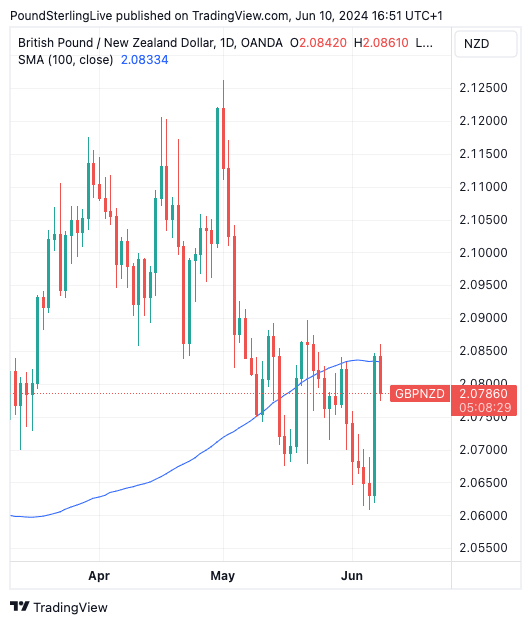GBP/NZD Forecast: Not Out of the Woods
- Written by: Gary Howes
-

Image © Adobe Images
The Pound to New Zealand Dollar exchange rate has more work to do if the outlook is to flip to constructive; in this regard, Wednesday's U.S. inflation print could be the determining factor.
GBP/NZD snapped a five-day losing streak on Friday following the release of stronger-than-expected U.S. labour market figures that lowered the odds of an interest rate cut at the Federal Reserve in 2024.
The resultant stock market selloff was a classic negative development for the Kiwi Dollar, which is positively correlated with global risk sentiment, meaning it falls when stocks sell-off.
GBP/NZD rose 1.08%, which is the single largest daily gain in a year, underscoring the significance of the move and confirming GBP to have been an unlikely beneficiary of these U.S. jobs data. In fact, Sterling rose against all its G10 peers apart from the USD.
The Pound benefited because markets simultaneously lowered expectations for rate cuts at the Bank of England, judging that the UK will also face 'sticky' inflation as the economy begins to grow again. This brings rate cut expectations between New Zealand and the UK closer together (the NZD is also expected to cut rates towards the end of the year), thereby diminishing a key driver of NZD outperformance since May 01.
From a technical perspective, GBP/NZD is capped by the 100-Day Moving Average (DMA), located at 2.0833:
Our reading from the above is that the 100 DMA must be overcome if any uptrend recovery is to be established.
The key determinant of whether this is possible will be the midweek release of U.S. inflation data. We started this article detailing how GBP/NZD rose following last week's U.S. jobs report. The inflation print is arguably a more important reading for currencies, meaning the market reaction could be more significant.
Should the data beat expectations, look for GBP/NZD to push higher and the recovery to grow in confidence. However, an undershoot will put the exchange rate back under pressure, with the scale of the selloff depending on the scale of the deviation from consensus expectations.
The figure to watch is 0.1% month-on-month for headline CPI and 0.3% m/m for core.












